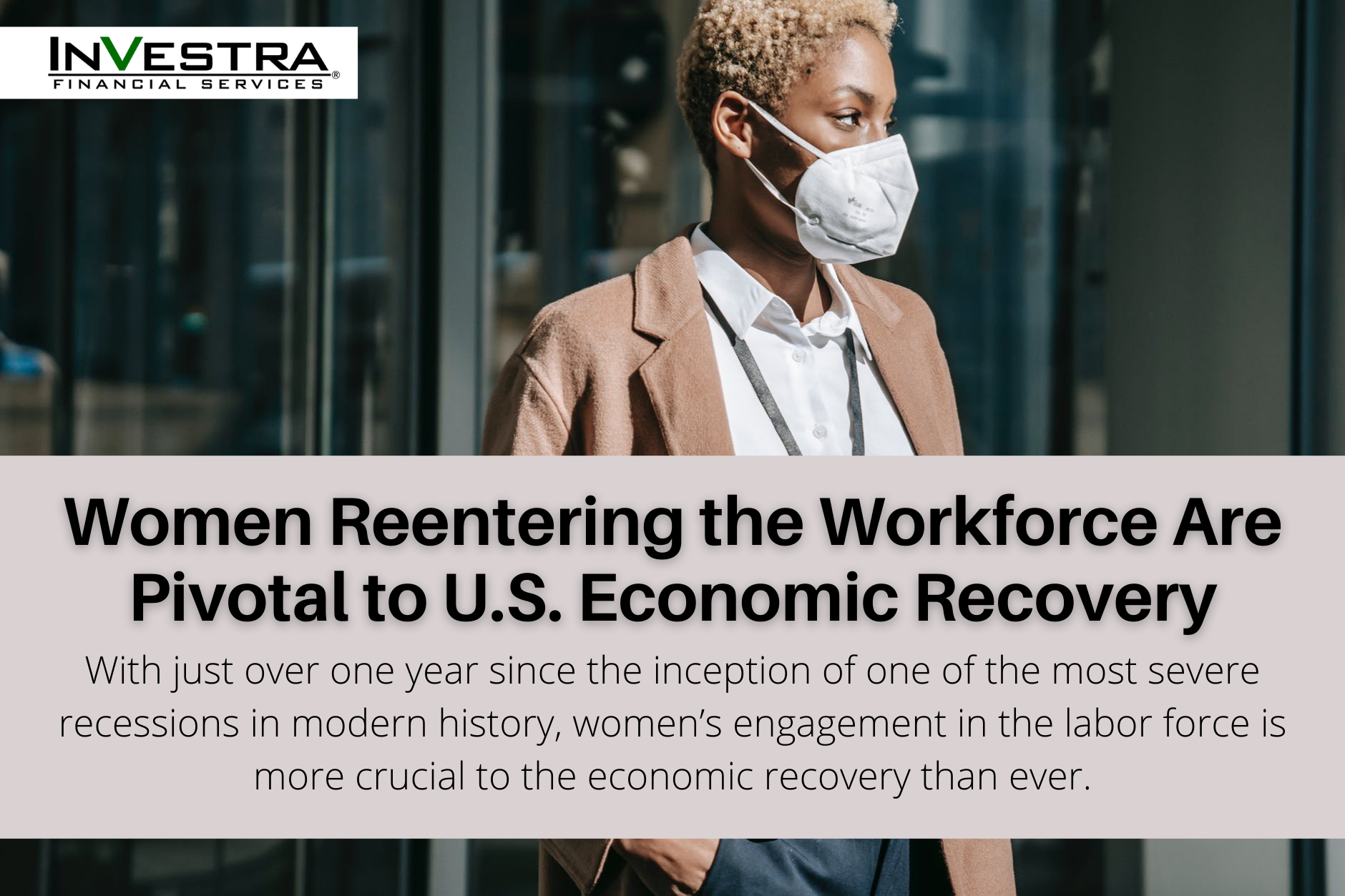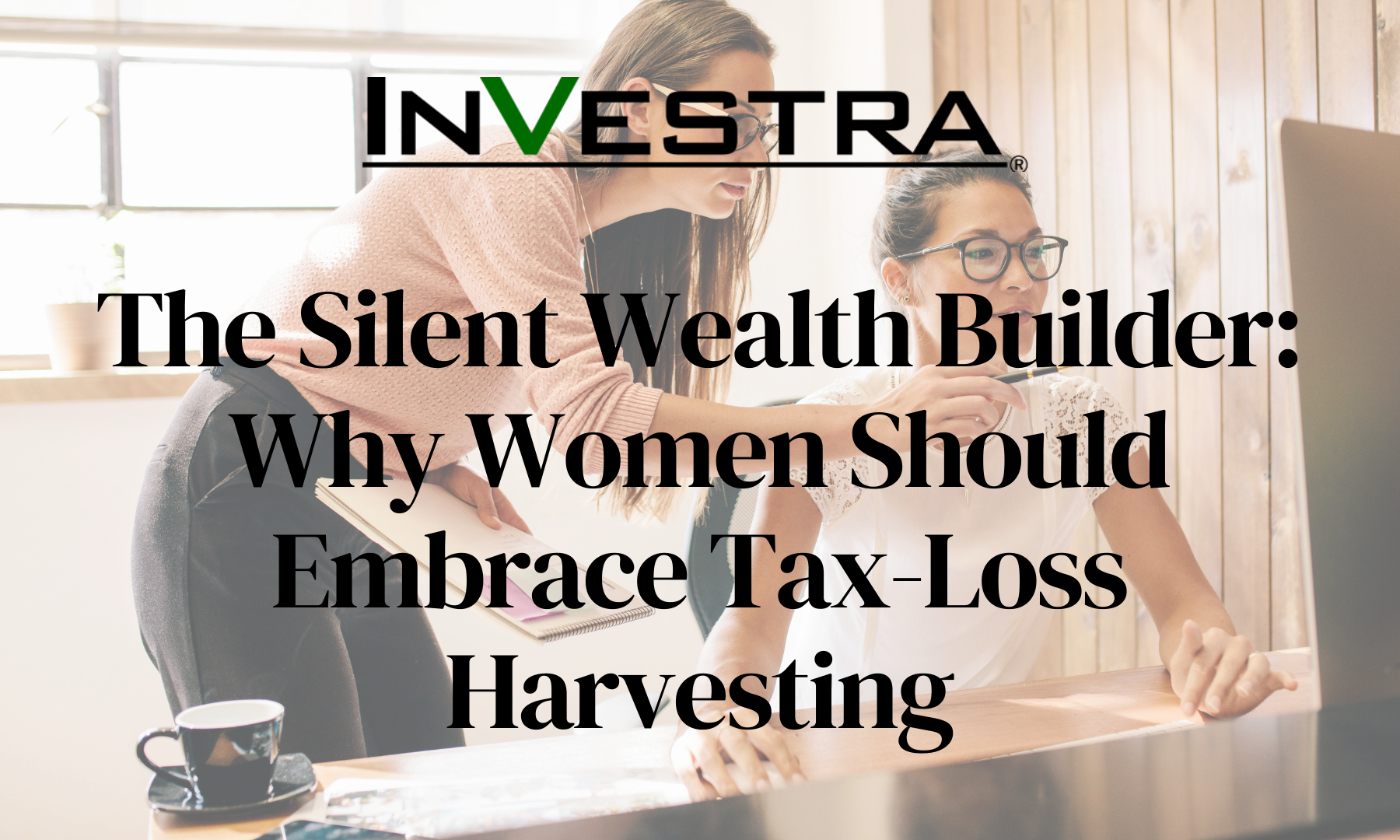With just over a year since the inception of one of the most severe recessions in modern history, women’s engagement in the labor force is more crucial to the economic recovery than ever.
The February 2021 U.S. employment report marked one year since the last report before the severe labor market shock of the COVID-19 pandemic. Though 58% of the jobs lost in March and April 2020 have been recovered as of February 2021, according the U.S. Bureau of Labor Statistics (BLS), the speed of the recovery has varied greatly across individuals, households, and sectors, leading many economists to describe the recovery as “K-shaped.”
This phenomenon is particularly applicable to women, who have been disproportionately affected by the 2020 recession. While this is concerning for policymakers focused on gender parity, it also has important implications for the broader U.S. economic recovery and outlook for monetary policy. Women reentering the labor force throughout 2017–2019 were a key driver of labor supply and real GDP growth prior to the COVID-19 crisis, and the extent to which they come back into the labor force in 2021 and beyond is critical to the overall economic outlook.
Women have been more affected by the post-pandemic economy
Women disproportionately lost their jobs and dropped out of the labor force during last year’s recession. Between February and April 2020, the nadir of the recession, approximately 13.4 million U.S. women (representing 18% of pre-pandemic jobs held by women) lost or quit their jobs. This compares with 14% of pre-pandemic jobs lost that were held by men. Similarly, during the pandemic women dropped out of the U.S. labor force at higher rates than men, with the female labor force participation rate dropping 3.5 percentage points versus 3.1 percentage points for men. More than 2.5 million women are no longer in the U.S. labor force, largely due to COVID-19 (all data is from the BLS).
Private surveys tell a similar story. A Harris poll last summer found that only 47% of women said they were still in the same job they held before the pandemic versus 63% of men (source: Harris Poll COVID-19 Tracker Wave 18, 26–29 June 2020). Harris polling data also found that 69% of women felt the economic impacts of COVID-19 would have a bigger effect on their lives than the virus itself (versus 63% of men), and that 47% of women described their primary mindset as “survival mode” – just trying to get through the pandemic day-by-day.
By some measures, women have also benefited less from the strong recovery. Despite the strong job gains over the past several quarters, the BLS reports the female labor force participation rate has only recovered 40% of its total decline versus a 50% recovery for men.
Why have women borne a disproportionate share of the pandemic-related damage to U.S. labor markets? We see three reasons:
- As a group, women have had to bear the brunt of additional household responsibilities resulting from disruptions in childcare. Surveys found that mothers are three times more likely to be responsible for most of the household labor (source: McKinsey), and that 23% of working mothers are unsatisfied with their work-life balance, versus 12% of working fathers. And one in five working mothers reported being worried that they would have to quit their jobs to take care of their children (source: KinderCare-Harris Poll and The Parent Confidence Report).
- Women are disproportionately represented in service sector jobs, which have suffered most from the economic restrictions to contain the virus spread. For instance, prior to the pandemic, women made up approximately 53% of leisure and hospitality sector jobs; however, they accounted for 54% of the job losses in these sectors. Similarly, they accounted for 63% of education sector jobs, but accounted for 67% of the jobs lost (source: BLS). Even in sectors where a majority of the jobs are held by men, including professional services, women accounted for the majority of the job losses.
- Women make up a high percentage of the workforce in several essential sectors, including healthcare and education, which bear more health-related risks of remaining at work. Women account for about 80% of healthcare jobs and 63% of education jobs (source: BLS). Meanwhile, they are underrepresented in professional services jobs (46%), which tend to be more easily adaptable to remote work. These statistics help explain why female job losses have been larger, but also highlight the impact that women dropping out of the labor force can have on the broader economy. Healthcare worker shortages have been a challenge throughout this crisis, so keeping women in the labor force is critical.
The economy could benefit from a more inclusive recovery
While policymakers are increasingly focused on gender equality, it is also a significant factor for the U.S. economic outlook. Not only are women’s skills essential to recovering from the health crisis – for example, shortages of healthcare workers are a key bottleneck in vaccine administration – but women are crucial contributors to overall economic output.
Research suggests that policies that help bring women back into the labor force tend to benefit the economy overall. A January 2021 study by the Federal Reserve Bank of San Francisco found that equalizing employment across gender potentially could have boosted U.S. GDP in 2019 by close to $500 billion. Meanwhile, making investments globally in areas like education, maternal mortality, and unpaid care work, which would benefit female labor market participation, could have economic benefits even larger than the required spending. Similarly, editors of the recently released book, “The 51%: Driving Growth through Women’s Economic Participation,” assert that the U.S. economy will not operate at its full potential unless women can fully participate, suggesting a combination of tax incentives, national parental and sick leave, and public investment in childcare.
Federal Reserve officials have increasingly appreciated the economic importance of an inclusive recovery, including the reengagement of women. Indeed, through direct community engagement, Fed officials received first-hand accounts of the benefits of tight labor markets to employment and real wages, particularly for women. This feedback, coupled with the strong evidence presented by various academic studies, informed the Fed’s updated “longer-run goals” statement, which redefined the Fed’s employment objective as “a broad-based and inclusive goal.” In practice, we think this means that an improvement in female labor force participation and a drop in the female unemployment rate will be crucial toward the Fed reaching its maximum employment goal.
But as Fed Chair Jerome Powell recently discussed in a February 2021 speech, sustaining maximum employment is likely to require more than just monetary policy. And politicians are increasingly focused on the potential benefits of gender equality as they evaluate fiscal policy. The Biden administration’s economic stimulus proposal includes paid family leave, money to reopen schools, and enhanced child tax credits. Vice President Kamala Harris has been drawing attention to the critical need to bring women back into the labor force. Treasury Secretary Janet Yellen in her confirmation hearing emphasized how the recession has been particularly brutal in its impact on minorities and women. Also of note, additional funding for childcare has bipartisan support in Washington.
The bottom line: One year after COVID-19 brought an unprecedented shock to the U.S. labor market, the recovery has been stronger than expected, but very uneven. Prior to the pandemic, improvements in female labor force participation contributed to strong real U.S. growth in 2017–2019. Today, in the wake of one of the most severe recessions in modern history, female labor force engagement is critical. Women have disproportionately shouldered the costs of this recession. And while some recovery has been achieved, a more complete recovery is needed to sustain economic growth and return the economy to full employment. The good news is that policymakers are increasingly aware of this issue, and committed to supporting the reengagement of all, including women.
This research material has been prepared for InVestra Financial Services.
Securities and advisory services offered through LPL Financial (LPL), a registered investment advisor and broker-dealer (member FINRA/SIPC). Insurance products are offered through LPL or its licensed affiliates. To the extent you are receiving investment advice from a separately registered independent investment advisor that is not an LPL affiliate, please note LPL makes no representation with respect to such entity.






